Cosmonauts: a tribute to Russian grit
 First published on spiked, October 2015
First published on spiked, October 2015What is it about the Russians and space flight?
During the grounding of the US Space Shuttle in 2003-5, and since the Shuttle’s demise in 2011, use of Russia’s Soyuz family of reliable, expendable, low-cost rocket launchers has been the only way to ferry astronauts to the International Space Station (ISS). For more than a decade, too, the ISS has housed Russian and other astronauts; it was first built out of Russian modules. And in today’s anti-satellite warfare, the Russians are right up there with the Americans and the Chinese, developing the means to approach, inspect, sabotage, destroy or fire at enemy craft. Indeed, Russians have been leaders in space thinking and practice since the 19th century – something Chinese and Americans cannot claim (1).
The Soviet Union made Yuri Gagarin the first man in space in 1961. In that flight and many after, the Moscow’s cosmonauts and capsules were small, brilliant and packed with equipment. So is this exhibition, which displays several wonderful scale models of spacecraft and two thumping real-life modules (2) in which Soviet cosmonauts descended to Earth – Vostok 6, 1963, and Voskhod 1, 1964. The exhibition is packed, too, with visitors, from kids to a man in a wheelchair. It’s an inspiring show, and sometimes a sad one.
The Russians celebrate space early
It begins and ends with Konstantin Tsiolkovsky (1857-1935), a deaf physics whiz (he designed his own, massive ear trumpet). Tsiolkovsky pronounced: ‘The Earth is the cradle of humanity, but mankind cannot stay in the cradle forever’. Not knowing Russian, I couldn’t follow the captions on Tsiolkovsky’s late, yellowing sketches of the principles of rocket flight, astonishingly presented, in the dark. But it is a fact that Tsiolkovsky’s equation linking the change in the speed of a rocket to the velocity of its exhaust and the mass of its propellant was published in 1903, in his The Exploration of Cosmic Space by Means of Reactive Devices. It is a fact that Tsiolkovsky was the first person to calculate the velocity needed to escape the earth.
In fact you can go back even earlier to see Russia’s interest in rockets. Extraordinarily, Nikolai Kibalchich, the Narodnaya Volya terrorist assassin of Tsar Alexander II, produced designs and calculations for a rocket reaction engine, improbably powered by compressed gunpowder, from his prison cell, just before he was hanged. That was in 1881 (3).
They were ahead of the game, the Russians.
At the start of Cosmonauts, we marvel at Konstantin Yuon’s justly famous painting, New Planet (1921) to see that.
Cosmonauts holds up this painting as an example of how, in the minds of artists, the new world promised by the Russian Revolution converged with the idea of human beings conquering new worlds beyond the Earth. While this was true of some early Soviet writers, I think the evidence for it among the Constructivists, at least – one of my favourite movements in art and design – is fairly slim; as their name suggests, they were more interested in propaganda around building and manufacturing than they were in outer space. Yet the early part of the show conveys an important lesson. Russians like Tsiolkovsky, and his circle of fellow enthusiasts for ‘cosmism’, or planning for humanity to fan out across space, were right to have their dreams about space, even if many of those dreams were overblown.
In Russian cosmism, leftish but loopy and somewhat religious ideas about human destiny jostled with Malthusian ones about colonising other planets to relieve Earth of overpopulation (the same is true of its contemporary descendant, transhumanism). Yet that does not take away from the scientific and imaginative achievements of Tsiolkovsky and people like him. Today, equally, NASA is right to have just recently dreamed up a three-stage plan to take humans to Mars. Why is NASA right? Not because we approve of its continuing military role, or because we want to thin out humanity by settling Red Planet, but because going to that planet will be testing, noble and eventually revealing.
Sergei Korolev puts the Race into the Space Race
In Cosmonauts, after Tsiolkovsky, we meet Sergei Korolev (1907–66). Born in the Ukraine, an intrepid aeronautical engineer and incredible organiser, Korolev initiated the Space Race with the launch of Sputnik in 1957, causing consternation all over America. He was the Soviet space effort’s Chief Designer, a man whom post-war Soviet Stalinism regarded as so valuable, it kept his identity anonymous for years and years.
As the exhibition poignantly confirms, Korolev was not only a genius of rocketry, but had survived Joseph Stalin’s pre-war repression of intellectuals and everyone else. Arrested on 27 June 1938 during Stalin’s Great Purge, then tortured, he was sent to the Gulag. The Science Museum shows mugshots of him taken by the secret police, as well as the drinking mug with which he was eventually allowed to trek back all the way to Moscow, from the slave-labour Kolyma goldmine in the far east of Siberia, 5000 km away. The mug was his sole possession on the journey.
After many more trials and tribulations, Korolev was officially rehabilitated in 1957. Though the exhibition tactfully fails to mention it, his design of the world’s InterContinental Ballistic Missile (ICBM) was successfully tested in August that same year.
Shrewdly as always, Korolev knew that Sputnik, launched on 4 October 1957, would be a museum piece one day. For that reason he insisted on a striking piece of design, a shiny, ball-and-spikes number. Yet for me Korolev’s main achievement goes even deeper than his designs. It was to show just how fast innovation can move.
Korolev, the Chief Designer Who Wasn’t There, put the Race into the Space Race. Within a month of sending Sputnik up he put a dog, Laika, into orbit on 3 November, and then sent the spacecraft Luna 1 on its pioneering trip to the moon on 2 January 1958. In 2015, people go on about the speed with which mobile phones, computer games and apps are adopted. Cosmonauts shows how technological innovation in space could move just as rapidly 60 years ago as it does in the much more tractable field of IT today.
Why is that? Utterly awful though it was, Nikita Khrushchev’s Stalinist regime could throw resources at innovation in missiles and civilian space vehicles like there was no tomorrow. On 14 September 1959, for instance, Korolev hit the Moon with a probe, only to circumnavigate it with second one on 7 October. Similarly, after launching Gagarin on 12 April 1961, Korolev didn’t stand on ceremony; by 19 May, he had got a machine to fly past Venus,
The second factor behind the high momentum of Soviet innovation in rocketry was the vaulting, pro-technology cultural atmosphere surrounding human endeavour in the Space Race years. In both the Soviet bloc and the West, that atmosphere was wide open to space exploration. Nowadays, by contrast, to put dogs into space, or use the fossil fuels that Korolev used, or select astronauts and cosmonauts on the basis of their smallness and lightweight qualities –such tricks are not very acceptable in the liberal drawing rooms of Britain and Europe. To be Valentina Tereshkova, the first woman to circle the Earth, in 1963? In 2015, such a grievously modest representation of women in aerospace affairs has become a matter for the United Nations.
The third factor giving the Soviet Union an early edge in space innovation was that the Russians, in that implacable way which is commonly associated with Russians, were enormously brave. They had at least as much of the ‘right stuff’ as the Americans, and no doubt they were fairly macho with it – thank heaven. Thus the first five cosmonauts didn’t come down in the sea, like America’s astronauts did; they ejected from their spacecraft and personally parachuted to hard ground.
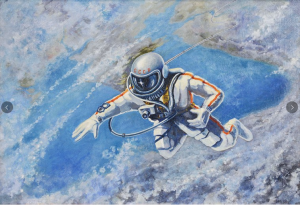
Self-portrait in space Over the Black Sea, by Alexei Leonov (1973) ©The Memorial Museum of Cosmonautics, Moscow
It was the same heroic story when Alexei Leonov performed the world’s first space walk in 1965. On exiting his craft, he gave a cheery wave, only to have to go on to disobey orders and deflate his space suit so he could stand some chance of squeezing back into Voskhod 2. Then Leonov and his fellow cosmonaut Belyayev had to bring their craft down to Earth manually, which it was not designed to do. Finally, after landing off course, the two cosmonauts spent two nights in the deeply snowed-in taiga forests of Russia. On the first night, Leonov had, at the ready, a nine-millimetre pistol to fend off bears and wolves.
An exhibition that’s worth going to
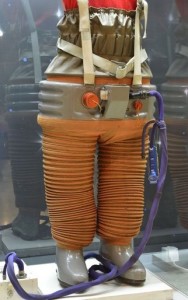
Lower-body negative pressure suit, 1971 ©Memorial Museum of Cosmonautics/State Museum and Exhibition Centre ROSIZO
Despite its socialist-realist posters and its poorly positioned captions, Cosmonauts does a great job. I recommend a visit.
On show here is a special spacesuit donned by the cosmonauts to haul excess blood from their legs, as well as another, thinner one designed to compress the spine, back and leg after weightlessness. Also worth a rueful look is a Soviet space shower; the cosmonauts rejected it as a means of cleaning themselves, preferring wet wipes.
The lunch table shown here gives one pause, too. It’s all unappetising tubes of food paste that look like tubes of paint, and round tins of what looks like iffy paté.
So, to return to the riddle: why, really, have the Russians proved so adept in space? In practice it’s quite hard to give a convincing answer; but what can be noted are some simple facts.
Russians have in abundance many of the universal qualities that make human beings the fantastic species we are. They have always had big ambitions, a relentlessness, a hardiness. They have always been good at mathematics and science. Though they have long been feared in war, the world still has much to learn from them.
In these times, it’s worth remembering that Russians aren’t all President Putin. Cosmonauts evokes a higher purpose than he will ever have.
Footnotes and references
- Still, China probably invented gunpowder-based rockets http://www.chinaculture.org/gb/en_madeinchina/2005-07/21/content_70826.htm in the Song Dynasty (960-1279). Likewise, America’s Robert Goddard http://www.nasa.gov/centers/goddard/about/history/dr_goddard.html flew the first rocket with liquid fuel in 1926.
- A feature of the Soviet space effort has been its modularity: see here http://www.woudhuysen.com/design-for-space/
- It is probable that Kibalchich had read Jules Verne’s Around the Moon, which was given its first Russian translation in 1874.
Cosmonauts: Birth of the Space Age is at London’s Science Museum, until March 2016; tickets cost £14.
Open Monday–Sunday. Friday late night opening – last entry 20:45. More details on http://sciencemuseum.org
@jameswoudhuysen I use my bicycle every day. Exercise and access to shopping without any parking meters and all that fuzz. But alfa-cyclists are the worst. They are competing at 40 mph and always acting rudely to get where they are going.
A PRO-CAR CYCLIST WRITES: 12-1pm tomorrow on #R4, will be talking bikes, cars, pedestrians, public transport – and #JeremyVine
Stimulating piece on the #CrisisOfCustomerService by clever @ClaerB @FT.
All that Clinton-era #CustomerExperience guff was always for the birds - certainly compared with, er, price.
The new thang? Often there is NO service - and thus no #CX!
Articles grouped by Tag
Bookmarks
Innovators I like

Robert Furchgott – discovered that nitric oxide transmits signals within the human body

Barry Marshall – showed that the bacterium Helicobacter pylori is the cause of most peptic ulcers, reversing decades of medical doctrine holding that ulcers were caused by stress, spicy foods, and too much acid

N Joseph Woodland – co-inventor of the barcode

Jocelyn Bell Burnell – she discovered the first radio pulsars

John Tyndall – the man who worked out why the sky was blue

Rosalind Franklin co-discovered the structure of DNA, with Crick and Watson

Rosalyn Sussman Yallow – development of radioimmunoassay (RIA), a method of quantifying minute amounts of biological substances in the body

Jonas Salk – discovery and development of the first successful polio vaccine

John Waterlow – discovered that lack of body potassium causes altitude sickness. First experiment: on himself

Werner Forssmann – the first man to insert a catheter into a human heart: his own

Bruce Bayer – scientist with Kodak whose invention of a colour filter array enabled digital imaging sensors to capture colour

Yuri Gagarin – first man in space. My piece of fandom: http://www.spiked-online.com/newsite/article/10421

Sir Godfrey Hounsfield – inventor, with Robert Ledley, of the CAT scanner

Martin Cooper – inventor of the mobile phone

George Devol – 'father of robotics’ who helped to revolutionise carmaking

Thomas Tuohy – Windscale manager who doused the flames of the 1957 fire

Eugene Polley – TV remote controls

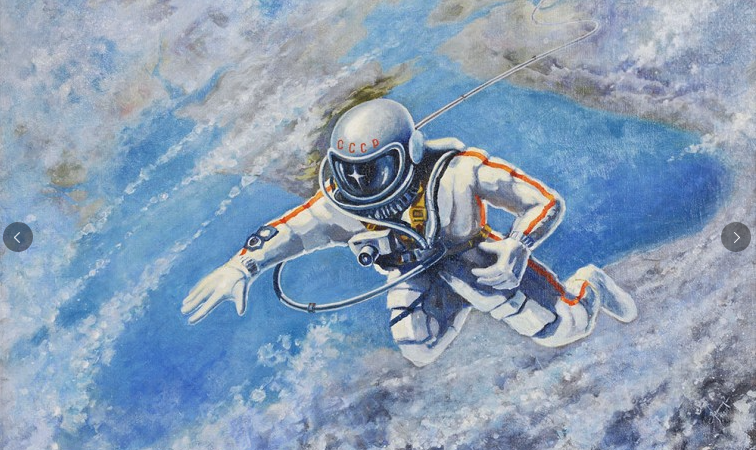
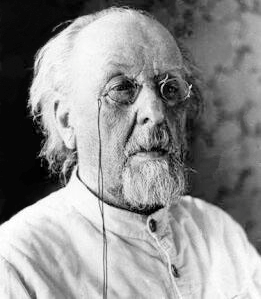
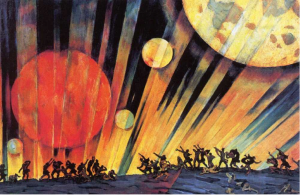
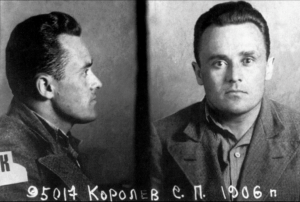

0 comments